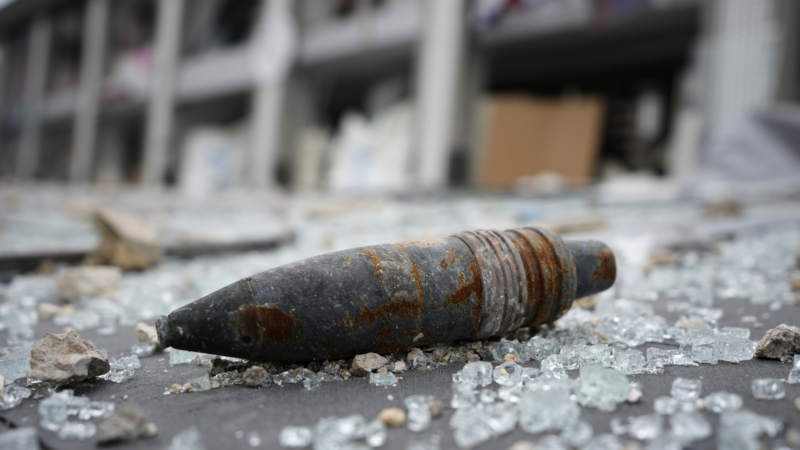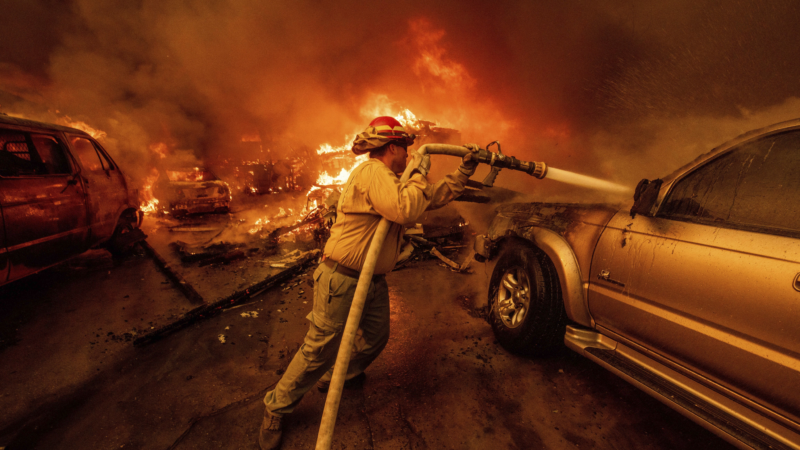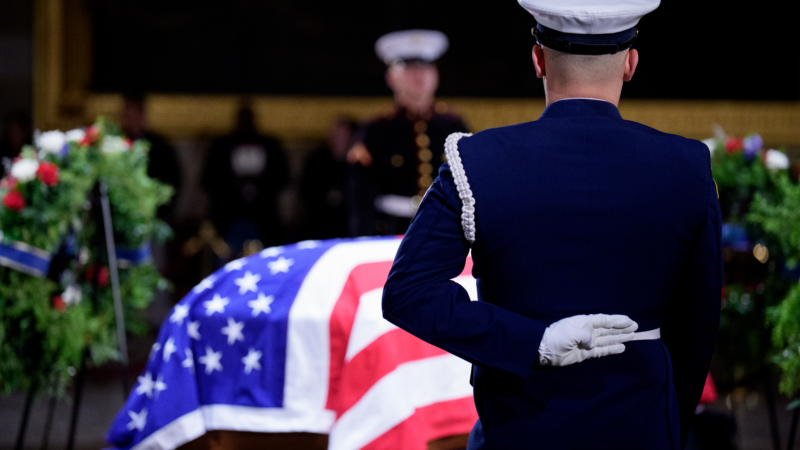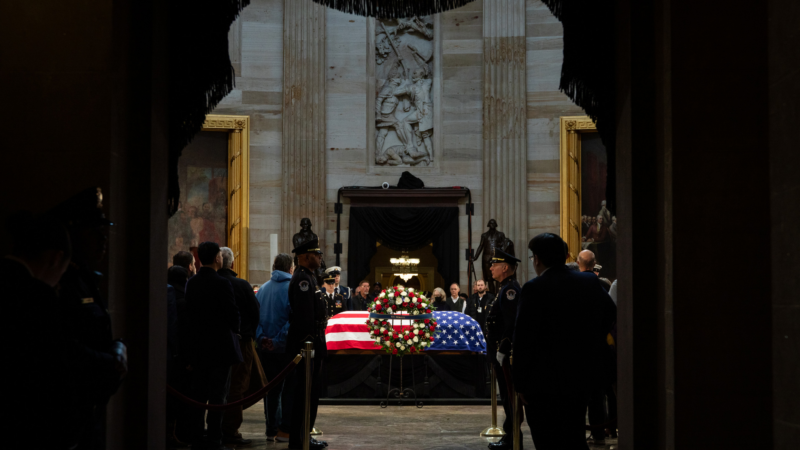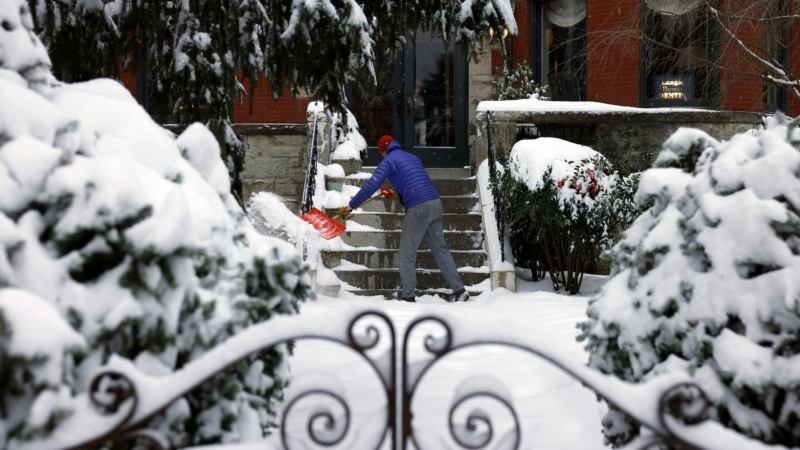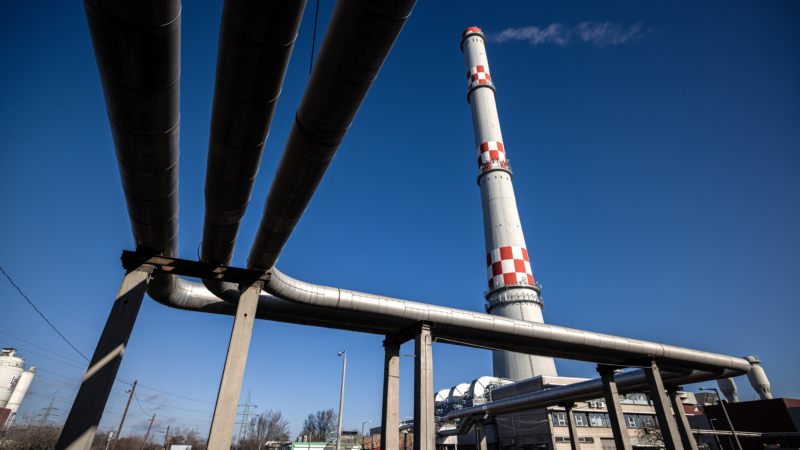Israel and Hezbollah have a ceasefire agreement. Here’s what it says
The ceasefire agreement between Hezbollah and Israel brokered by the United States and France states it is designed to “promote conditions for a permanent and comprehensive situation,” while President Biden earlier this week characterized it as an attempt to deliver a “permanent cessation of hostilities.”
It includes 13 separate points of agreement, with several of those broken up into separate parts, with specific requirements of both sides to adhere to agreed upon timetables for withdrawal from or arrival in designated regions of southern Lebanon that have long been military strongholds for Hezbollah – an Iran-backed group the U.S. and several other nations have designated a terrorist organization.
Central to the deal is a United Nations Security Council resolution, numbered 1701, that was first passed back in 2006, at the end of the last large-scale conflict between the two. A key challenge remains the weakened and at times precarious nature of the Lebanese state, though the country’s powerful parliamentary speaker, Nabih Berri, announced Thursday that there would be a parliamentary vote to elect a new president, as part of efforts to end a two-year power vacuum.
Leaders on both sides of the months-long conflict have attempted to portray this ceasefire as a success – though many observers interviewed by NPR have questioned such assessments – and they have sought to publicize their recent military achievements to their respective domestic audiences.
The deal has been greeted by relief among many Lebanese civilians after a punishing program of airstrikes and military incursions across villages, towns and cities since September, but in Israel residents of communities in the country’s northern border region have remained hesitant about returning to homes that have faced a months-long barrage of rocket fire.
The Israeli Prime Minister’s office has not released an official version of the deal, but an Arabic version was published on the Facebook page of Lebanon’s Council of Ministers. Below is a summary of its main terms – as detailed in a version that NPR obtained separately – and which both sides have confirmed is authentic.
Israeli military and armed groups must both end offensive operations
Lebanon’s government is required to prevent Hezbollah and any other armed groups that operate in Lebanon from conducting combat operations against Israel, while the Israeli military is expected to end its offensive actions against targets inside Lebanon, whether civil or military. This is essentially the crux of the ceasefire, but it is important to note that this does not preclude either the Lebanese or Israelis from exercising the right to self defense that is guaranteed under international law.
The Israeli and the Lebanese governments are also required to rebuild lines of communication with each other, in a forum that the United Nations will host and the United States will chair, alongside France. A team of representatives will be guaranteed safety by both sides, and will aim to observe and verify that the deal’s details are being implemented on the ground and support the Lebanese military’s efforts to remove any vestiges of Hezbollah’s military strength in southern Lebanon.
The Israeli military said Thursday one of its aircraft struck a storage site for Hezbollah rockets, one of the first large-scale skirmishes that could reoccur in the coming months as Hezbollah and Israel withdraw to the respective positions agreed upon. The Israeli authorities insist Thursday’s actions did not mean the ceasefire had been broken, since they were not offensive in nature.
But if there are any violations of the ceasefire, both Lebanon and Israel will be required to report them to this group through processes that have not yet been established, which may leave it open to interpretation.
“The key thing is there is no enforcement mechanism,” says Karim Makdisi, a professor of international politics at the American University of Beirut. “There’s a higher visibility now with the Americans being directly involved – but it’s not an enforcement mechanism.”
A similar oversight system was established after a previous Israeli incursion into Lebanon, back in 1996, according to Nicholas Noe, director of the Beirut Exchange Foundation. Though different in its scope, it was widely judged as successful at reducing civilian conflicts during what proved to be an ongoing low-intensity conflict between Hezbollah fighters and Israeli forces — something that will be crucial given the expected return of hundreds of thousands of internally displaced Lebanese civilians to this region.
But having reviewed this week’s agreement, Noe anticipates it is unlikely to function as well as the original one did in the late 1990s, because the Israelis will be able to define an “offensive” action on their own terms. “It seems as if we’re just going to continue to see sort of Israeli military strikes in Lebanon in the coming period,” Noe predicted, “as they see fit.”
Only Lebanese military to operate in Southern Lebanon

Following the end of the last round of major hostilities between Hezbollah and Israel in 2006, UN Security Council resolution 1701 was supposed to ensure that Hezbollah was unable to rebuild its military capacities in the south of Lebanon. Despite the presence of a United Nations peacekeeping force in the region, known as UNIFIL, the endeavor to restrain Hezbollah’s armed capabilities close to the Israeli border failed, as evidenced by the almost 14 months of frequent rocket fire from southern Lebanon into northern Israel that followed the Hamas attacks of Oct. 7, 2023 and the Israeli military response in Gaza.
As part of the agreement this week, with the exception of the United Nations force that will remain, only the official military and security forces of Lebanon will be permitted to operate in a region of the country south of a landmark river, called Litani. The Lebanese army’s forces will also be required to establish and man checkpoints on all access routes to the area south of the river.
Hezbollah will not be permitted to retain any military infrastructure or weapons storage sites across a wide swathe of the country’s south — though analysts say it may be challenging to identify and eradicate all such sites — and the Lebanese military will be required to dismantle any weapons manufacturing facilities it does locate.
The U.S. and France will work alongside several other NATO member countries who have established a training effort, led by Italy and known as the Military Technical Committee for Lebanon, to move 10,000 Lebanese army troops to southern Lebanon as swiftly as they can deploy. The committee, known by its acronym MTC4L, began infantry training courses over this past summer, and the U.S. and France have vowed to expand international support for further training and recruitment.
The United States lead envoy to Lebanon, Amos Hochstein, had recently floated plans with both Israeli and Lebanese officials for a multinational force — separate from the United Nations — to oversee the region’s security, alongside an Israeli suggestion for a buffer zone inside Lebanon’s sovereign territory, over which Israel’s forces might temporarily hold sway.
The fact these proposals are not part of the agreement and the Lebanese army will instead take nominal control of the country’s south represents success for Hezbollah, according to Dr. Amal Saad, a leading Hezbollah expert and lecturer in politics and international relations at Cardiff University in the UK. “The very fact that Lebanon or Hezbollah forced this upon Israel is a huge sort of tactical victory in itself,” Saad says. “This is especially the case when we consider the sorts of amendments and proposals that have been put forward over the past two months by Amos Hochstein.”
Arms transfers to Lebanon to be more tightly controlled
The sale of weapons and military equipment into Lebanon will be regulated by the government of Lebanon, a measure that is intended to prevent non-state militant groups like Hezbollah from rearming and reestablishing their military capacities. This oversight will also apply under the agreement to the manufacture and production of weapons systems inside Lebanon itself.
Analysts say one of the major challenges in enforcing this facet of the deal will be the decades-old smuggling industry that operates in the border region between Lebanon and Syria, where the government of President of Bashar al Assad has long turned a blind eye to — if not actively supported — the transfer of weapons supplies that Israel says often originate in Iran.
“Deploying the same Lebanese army to areas where it – by the way – was before, you might be ramping up the numbers a little bit,” says Peter Harling, director of Beirut-based research organization, the Synaps Network. “But for now, there’s absolutely no basis to believe that this will have an effect in reality.”
Hezbollah fighters notably supported Assad’s own forces during the years-long Syrian civil war that began in 2011 and still continues in sporadic pockets of that country’s north. In recent months, Israeli aircraft have repeatedly targeted locations inside Syria that commanders say have been involved in this smuggling, and right up until the ceasefire took effect on Wednesday strikes continued on sites inside Lebanon tied to that cross-border trade.
This week’s agreement stipulates that the U.S.-backed Lebanese army will have full control to monitor the country’s border crossings to prevent unauthorized arms entries, and confiscate other weapons or military systems it locates in the area south of the Litani River, around 20 miles north of the de-facto border between the two nations.
Israeli forces to conduct phased withdrawal

Over the next two months, Israeli troops will withdraw south of the de-facto border, as Lebanese army forces take up their previous positions in the band of territory that stretches south of the Litani River. This handover of security control will be overseen by the new group chaired by the United States, and during this period, Lebanese government-controlled troops arriving to their positions south of the Litani River will be obligated to destroy or dismantle any and all remaining Hezbollah infrastructure, as well as confiscate weapons.
The deal concludes with language focused on efforts that the United States and France say they will lead to help develop and lift Lebanon’s long struggling economy, as well as commitments to ensure civilians in both countries can return safely to their homes and land.
But until the deal’s deadline for the full withdrawal of Israeli troops in late January, its military commanders will likely continue to warn evacuated residents of towns and villages in southern Lebanon to stay clear of their forces’ positions. And though it is not included in the text of the agreement obtained by NPR, Israeli political and military leaders have repeatedly said they must nonetheless retain the capacity to strike targets in Lebanon if they perceive them to be a threat.
An Israeli military spokesperson warned Lebanese civilians on Thursday not to return to certain villages strung out across a marked territorial line close to the Israeli border, saying in a statement posted on social media that “anyone who moves south of this line – puts himself in danger.”
Reporting was contributed by Didi Schanche, Lama Al-Arian and Jawad Rizkallah in Beirut.
More fires erupt in Southern California and spread to the Hollywood Hills
Three new fires broke out in Los Angeles and Ventura counties on Wednesday. California Gov. Gavin Newsom said more than 7,500 personnel are helping in the response to the infernos.
Special ed students benefit from being integrated at school. It doesn’t always happen
Research shows including students with and without disabilities in the same classroom can benefit everyone. Two students with Down syndrome show what can be gained when that happens.
U.S. stock markets close to honor former President Jimmy Carter
The New York Stock Exchange and the Nasdaq will both observe Thursday's national day of mourning in a Wall Street tradition dating back to 1865.
All 5 living presidents expected to attend Jimmy Carter’s National Cathedral funeral
President Biden is expected to deliver a eulogy to former President Jimmy Carter at the National Cathedral service.
A major winter storm will bring snow to the South. Here are tips from winter experts
Southern states don't often deal with winter conditions, but New England does. New Hampshire especially has tips for how to prepare for a winter storm.
Here’s what’s behind Russia cutting off its last gas line to Europe
A decades-long Russian-Ukrainian transit gas deal to Europe ended on Jan. 1. For now, the most acute effects are being felt in a region called Transnistria, on the eastern edge of Moldova.
